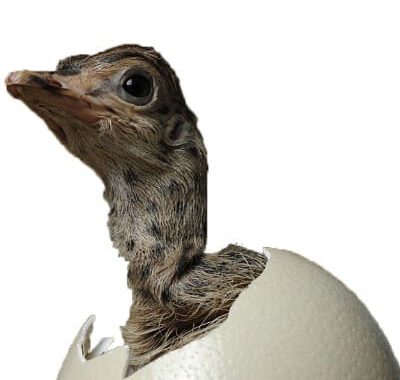Результаты перевода
In terms of pathology, in general, the ostrich is a bird
resistant to disease. However, there are some specific conditions.
Wing fractures – the treatment consists in applying a board on the fractured wing and bandaging it with a bandage that crosses through the back. Rupture of the wing or tail – in the place where the feather rupture occurred, the place is disinfected with iodine tincture and the affected ostrich is separated to avoid cannibalism. Skin wounds are disinfected immediately after their production and treated locally with antibiotics. If the wound is in a body area where the bandage can be applied, then it will be applied (wings, foot).
Another condition is chronic respiratory disease, the disease being encountered in young ostriches. The causes of the disease are: stress, overheating, congestion and inadequate microclimate conditions. Clinical signs consist of the presence of nasal mucosa in the airways prior to the onset, then the lesions also catch the trachea, lungs and air sacs, with difficulty breathing, ruffled plumage and deviation. The treatment consists in the parenteral application of antibiotics.
Aspergillosis is caused by Aspergillus. The causes of the disease are moldy bedding used in shelter and the use of moldy feed in food. The signs of the disease are similar to those of respiratory disease (dyspnea, cyanosis, pneumonia). Once the disease has occurred, it cannot be treated, it is prevented by using the appropriate bedding and feed. Antimitotics – Nistaron – are used as treatment.
Colibacillary enteritis is caused by Escherichia Coli, which, under stress, turns into a pathogenic bacterium. The disease is characterized by rapidly evolving and deadly inflammatory enteritis. To prevent the occurrence of digestive infections, general prophylaxis measures must be observed. For the protection of the digestive tract are used from the first days of life of ostriches, prebiotics in drinking water or feed.
Malnutrition is a digestive dysfunction characterized by overloading the middle digestive tract (proventric and ventricle) with food followed by a similar bowel disease. The disease is manifested by staggering gait, lack of appetite, constipation: on palpation there is a hard abdomen. It occurs at any age and the diagnosis is made by radiological examination. The treatment consists in the administration of laxatives (molasses) mixed with a few drops of shark oil and forcing the bird to move a lot; in fact, lack of exercise and poor nutrition are the main causes of the disease.
Among the most common infectious diseases in ostriches we mention: bird flu, Newcastle disease and hemorrhagic fever. The parasitosis are: lice infestation, earthworms, sycamosa.
Regarding the treatment of ostriches, breeders need to know certain rules. Ostriches are not forced to administer drugs dissolved in water in the mouth, as respiratory diseases can occur. The drugs can be administered in drinking water for gastrointestinal disorders, and for respiratory diseases to be applied by spraying on the beak, mouth and nostrils. Due to the ostriches’ predilection to ingest everything they find, it is easy to take the pills.

